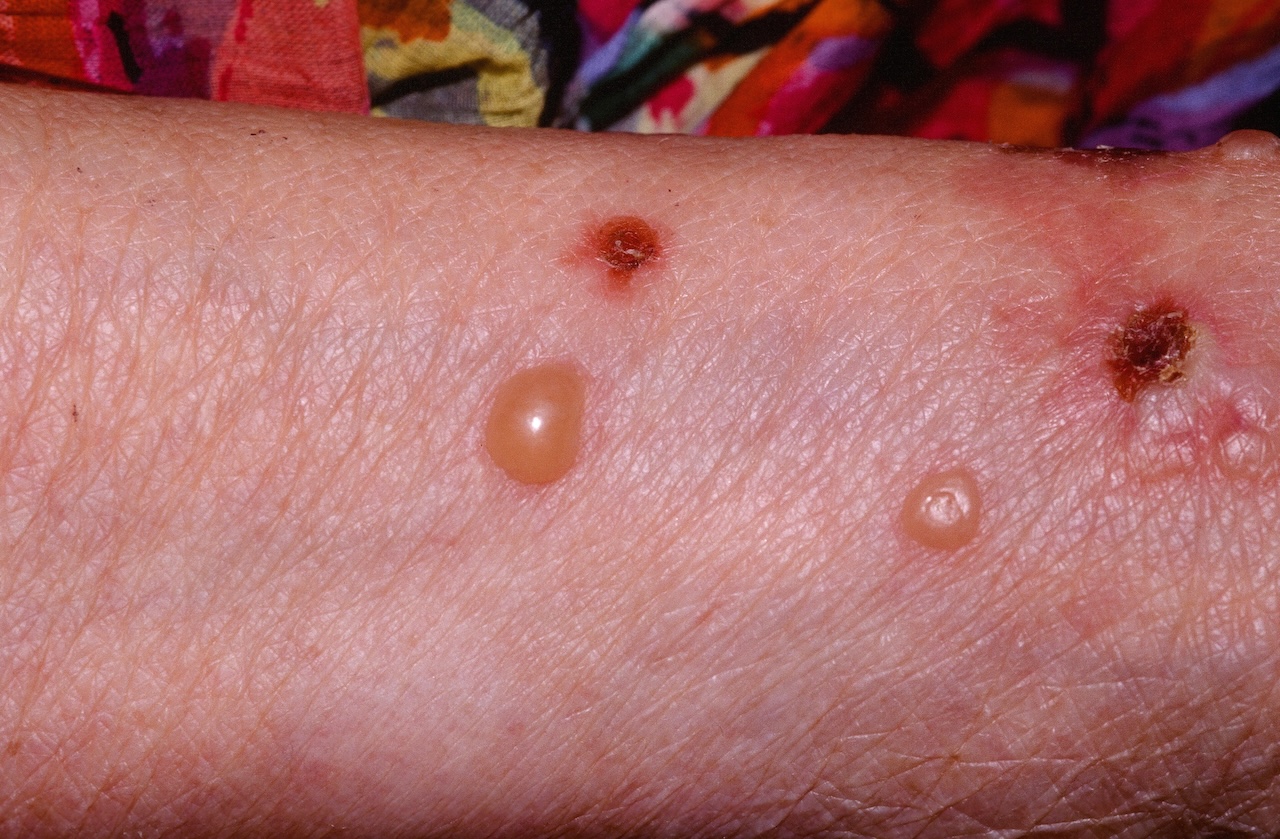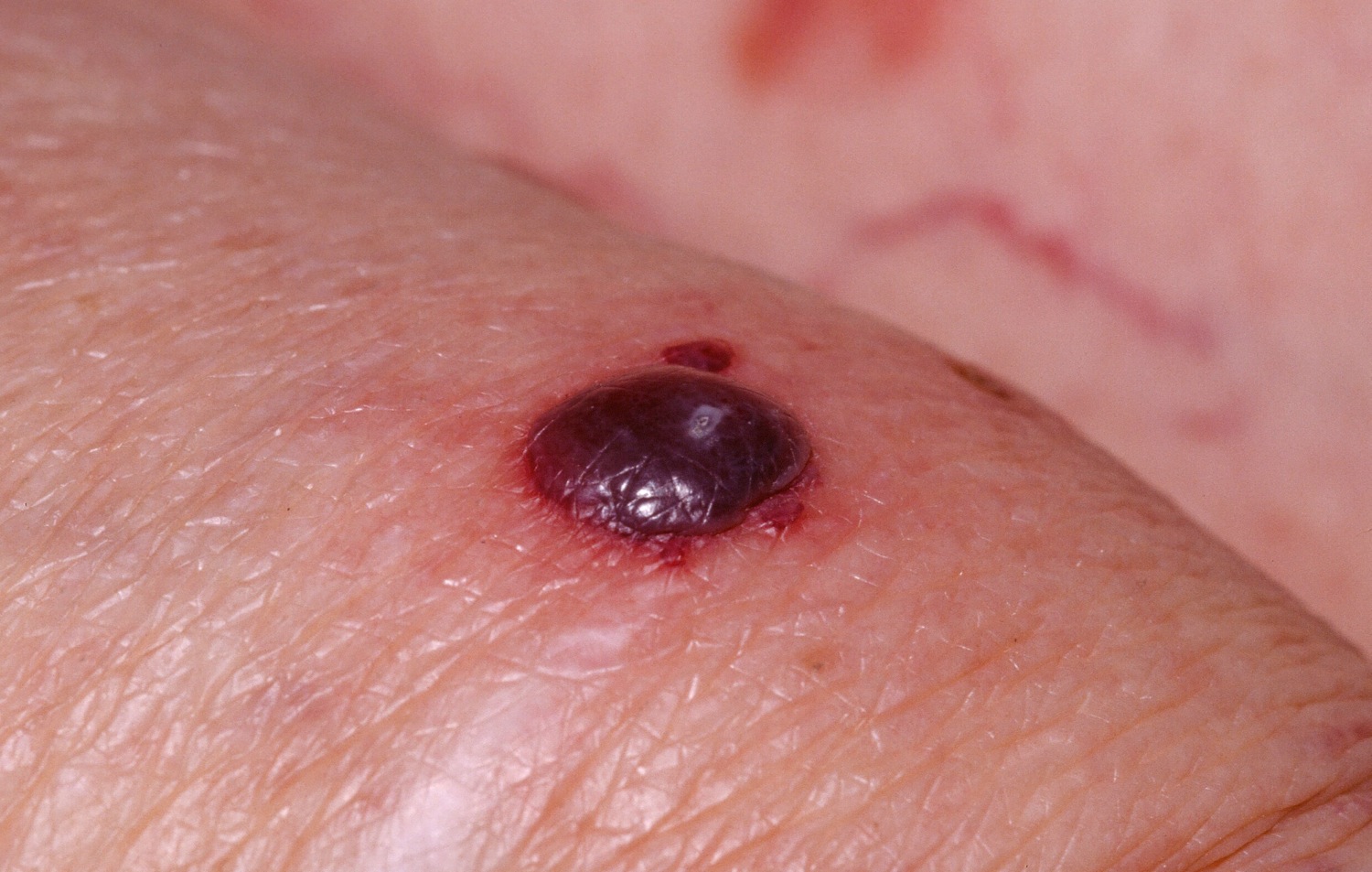
Tense blisters in an older person is typical.

Tense blisters in an older person is typical.
Bullous Pemphigoid (BP) is a subepidermal autoimmune blistering disease associated with autoantibodies to the hemidesmosomal bullous pemphigoid antigens 180 and 230 located in the basement membrane zone (BMZ).
Localized or widespread urticarial plaques with overlying tense bulla or erosions in an elderly person is characteristic. Oral involvement is less common than in pemphigus vulgaris. Rarely, BP may preferentially affect the sun-exposed areas or be induced by UVB. In patients who scratch too much, prurigo nodularis lesions may develop, called pemphigoid nodularis. The clinical presentation of BP in children is similar to that in adults except there is more frequently involvement acrally and of the mucous membranes.
Some patients present with urticarial plaques. They may be small, e.g. 1-2 cm or large, spanning > 10 cm. The diagnosis is sometimes not suspected as urticarial BP can present before any blisters. BP may rarely present with oral erosion alone in the elderly.
The Asboe-Hansen sign is positive: pressure applied to the top of the blister causes lateral extension of a blister.
Neurologic disorders, e.g. Parkinson's disease, dementia, stroke, multiple sclerosis, are much higher in patients with BP than controls. It is thought that neurodegenerative processes uncover BPAg1-n, an alternatively spliced form of BPAg1-e that stabilizes the cytoskeleton of sensory neurons, generating autoantibodies that may subsequently lead to BP by cross-reacting with BPAg1-e. A study reported an associated occurrence of BP in 21% cases of neurological disorder (8% stroke, 7% dementia, 3% Parkinsonism, 2% epilepsy and 1% multiple sclerosis) of more than a year's duration.
Mortality is higher than in controls. Infection is the cause of mortality in up to 60% of cases. Pneumonia is 3 times higher than the general population. Older age, poor general condition, dementia and the use of high-dose corticosteroids are risk factors.
Both topical and oral iodine have been reported to cause BP. Rarely, BP may be drug-induced (e.g. everolimus, sirolimus furosemide, penicillamine, captopril, etc.). Dipeptidyl peptidase-4 inhibitors used to treat diabetes have been reported to trigger BP, specifically linagliptin, sitagliptin and vildagliptin. PD-1 Inhibitors e.g., nivolumab and pand PD-L1 inhbitors may cause autoimmune bullous disorders, most commonly bullous pemphigoid.
There are two types of DIBP, DIBP-proper which resolves with removal of the drug and drug-triggered BP which persists.

Some bulla may be hemorrhagic.

Localized BP centered around the umbilicus and slowly spreading over time.
Homepage | Who is Dr. White? | Privacy Policy | FAQs | Use of Images | Contact Dr. White